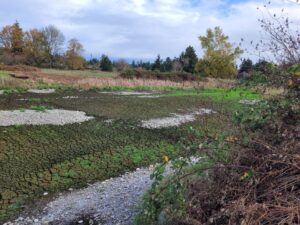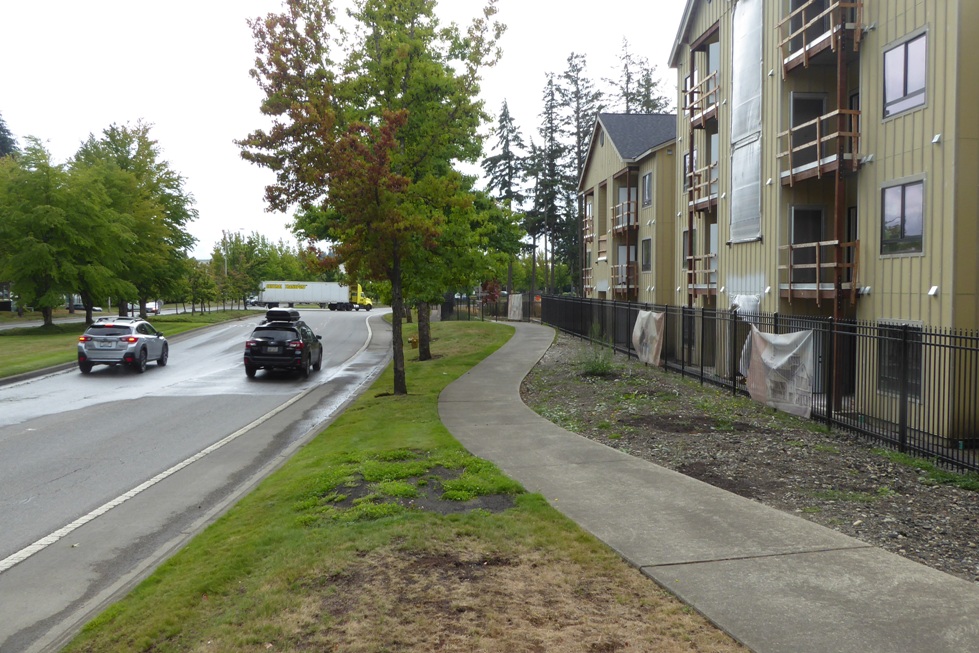By Kirk Kirkland and Al Schmauder
Will Pierce County be able to meet future demand for clean drinking water required by increasing population and development in the Chambers-Clover watershed?
Water managers conclude there will be adequate water to supply homes and other uses until about 2040. Lakewood Water District (LWD) committed to sell up to 10 million gallons of water per day to other water purveyors. Pierce County has an additional water right in the Chambers Bay area that could be used in the future as well.
City of Tacoma also has ample supply for the city and for wholesale. Intertie lines can be used to transfer water between purveyors to Tacoma Water. Their source of water from is the Green River in King County. More storage capacity may be needed to meet the peak day demand in the future.
A toxic chemical called PFAS has been found in about one third of the wells in the Lakewood Water District, and recently in a few wells in the Parkland and Spanaway areas. This pollutant, which is regulated by EPA and the State Dept. of Ecology, is currently found in the upper aquifers (A & C).
However, as PFAS contamination slowly moves toward Puget Sound, it is likely to show up in the lower aquifers in Lakewood and possibly other areas. It will take decades for the pollutant to gradually expel from the aquifers.
For decades, a firefighting foam containing PFAS was used on McChord Airfield to practice fire suppression and to protect aircraft in storage. In December 2000, a pipe broke in a hanger, spilling about 50 gallons of the chemical, which flowed into Clover Creek. The spill also drained into aquifers used by Lakewood Water District, and LWD sued the Department of Defense for damages.
Water purveyors can ensure water is not contaminated by PFAS and other pollutants by filtering the water and using deeper aquifers (E & G). However, filtration plants are costly to install and maintain.
Dupont recently built two filtration plants at a cost of $5.6 million. Lakewood WD received about $950 million from Congress to drill a deeper well. Small water systems may not be able to cover the costs of filtration.
According to the Environmental Impact Statement (FEIS) for Centers & Corridors, water capacity and other infrastructure needs like roads, schools, and fire protection, in Spanaway and in the Urban Growth Area have sufficient water to meet demand until 2040. Tacoma Water currently has 20 emergency interties with 10 other water purveyors to accommodate future increases in housing.
“In recent years, it has become increasingly difficult to develop new sources of water supply because of the limitations on the availability of new water rights,” according to the evaluation in the EIS. “This trend is likely to continue as growth increases the need for water, while at the same time environmental and water quality requirements grow more stringent.”
During the last major upgrades to the Chambers Creek Regional Facility at Chambers Bay, the County constructed some of the infrastructure for a reclaimed water facility. It could be pumped upstream and used for golf courses and other places where it would recharge the aquifer. The decision to complete the reclaimed water facility will be based on future needs and estimated costs of pumping water uphill.

Droughts, Drinking Water, Creek Flow
In the last several summers, more days of drought has reduced groundwater level and the flow in the creeks. Climate forecasters tell us that long term summer droughts are predicted which also provides an increase of winter rains from 35 to 50 inches.
The loss in stream flow in creeks can be offset by capturing more rain water to recharge the local aquifers and provide a more sustainable source of drinking water long term. Such a project will require filtering storm water drains to remove road chemicals like gas and oil and a tire dust called 6PPD.
Studies have shown 6ppd and PFAS are harmful to humans. To solve this problem, the county began a program of retrofitting drains that carry rain from heavy traffic areas. Pierce County Public Works plans to complete an inventory of drains from high traffic roads and can now determine which drains to be filtered first. In the past two years, adding filters to two drains costed $2.6 million.
To solve the long-term ground water shortage, the county’ needs to monitor wells and examine trends in the volume of water pumped from the aquifers and the water levels in wells. The Tacoma Pierce County Health Department needs funding to monitor wells.
In 2007 the Health Department’s water monitoring program found that 34 of 113 showed a decline in water level. In Clover Creek watershed, they report showed 20 out of 48 wells show declining water level.

Asphalt was removed on this section of Clover Creek in November of 2009 to make it possible to recharge the aquifer in this section of the creek near Parkland Prairie park on Tule Lake Road.
______________________________________________________________
The Pierce County Council is considering a proposal to re-start the previous, groundwater monitoring program. It would create a data base of well levels and pumpage. This data can be used in future years to determine trends, guide water use decisions and measure the success of recharging the aquifer.
There is no current need to build water re-use facilities, like those used in Olympia (LOTT). However, If in the future, Pierce County’s sewer permit (NPDES) requires less sewer discharges into Puget Sound such a re-use plant would be feasible.
Can this program be paid for without increasing surface water fees?
A review of the storm water six-year budget showed less than 5% of the funds collected from stormwater fees from the watershed residents were spent in the Clover Creek Watershed. A more equitable distribution of funding around the county could cover costs for well monitoring and replacement of storm drains in high traffic areas of the Clover Creek Watershed.
This recap provides an update to the 2024 Interim Report on drinking water. Source of information came from interviews and comments from the Lakewood Water District, Parkland Light and Water and Jeff Johnson, former manager of Spanaway Water District.
Note: This story was prepared by Al Schmauder, Water Steward, Chambers-Clover Watershed and with Kirk Kirkland for this newsletter.


